It’s a small detail that will reflect your meticulous nature, not to mention classy taste. Here are the dos and don’ts for setting an impeccable dinner table.
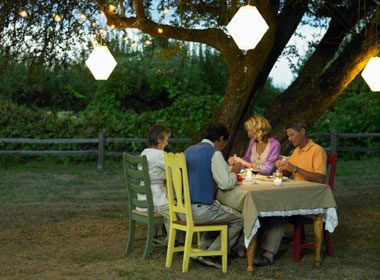
Tablecloth
Do
Always use a tablecloth when receiving guests: it’s neater, and so much more elegant. The tablecloth should be large enough to cover the entire table plus an overlap of at least 4″ on all sides.
Don’t
Superimpose two tablecloths. If your tablecloth isn’t large enough, use three instead: one on the left, one in the centre and one on the right. They should all be the same colour: if this isn’t possible, the two at the ends should match.
Use a tablecloth that is too long: it will only be in your guests’ way and could potentially cause a mess.
Leave creases (from folding or other) in your tablecloth. Take a few minutes to iron them out before placing it on the table.
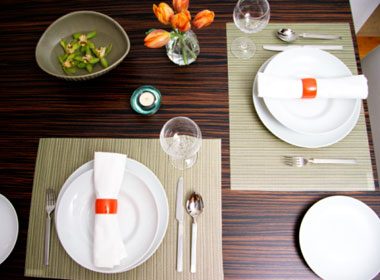
Plates
Do
Take advantage of any special occasion to take out your finest dishes: it’s so rare that you get the chance to use them!
Place the dinner plate about 2cm (approximately ½”) from the edge of the table.
Place the bread plate to the top left side of the dinner plate.
Don’t
Serve the soup bowl directly on the table: always place it on top of a large plate.
Place empty plates beside those being used for the bread and main course right away; any additional dishes should be brought to the table only when serving a new course.
Place the settings too close together; give your guests enough room so that they don’t feel restricted.
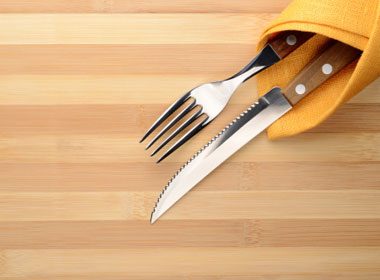
Utensils
Do
Put different utensils on the table for each course. Proper etiquette dictates that you use the utensils placed on the outside–farthest from the plate–first, and then work your way in.
Place the forks (large and small) to the left of the plate. According to the previously-mentioned order, the small fork should be placed to the left of the large fork, since it will be used during the appetizer course, which is served first.
Place the knife (or knives, depending on the courses) and tablespoon to the right of the plate.
Wait until the appropriate time to bring teaspoons or cheese knives to the table if your meal calls for them. If this is not possible, place them above the plate in the order they will be used (again, following the principal that the farthest from the plate should be used first).
Place the butter knife across the bread plate.
Don’t
Use the same utensils for the appetizer and main course.
Place the knife with the blade facing away from the plate.
Place the teaspoon to the side of the plate.
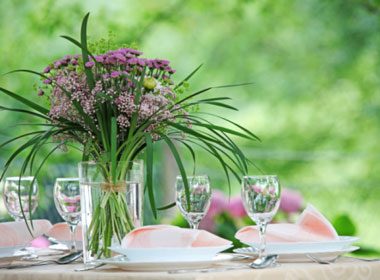
Glasses
Do
Place the water glass above the knife.
Place the wine glass (or glasses) to its left at a slight upward diagonal. From left to right, you should have the water glass, the white wine glass, then the red wine glass.
Important note: red and white wines should be served in different glasses. For reds, use a large, round, balloon shaped glass, and for the white, use a longer, tulip shaped glass.
Don’t
Forget to place a pitcher of water on the table. Take out the salt and pepper shakers, too while you’re at it.
Serve different wines in the same glass. If you really want to be fancy, put out a different glass for each wine service.
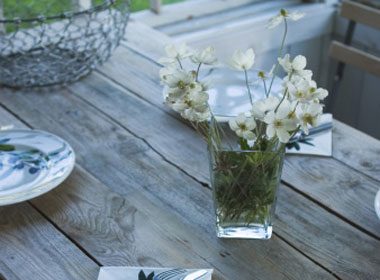
Decorations
Do
Add your own personal touch. Candles are a must for a pleasant ambiance and a pretty table. Tea lights are a good alternative; they light the table without obstructing anyone’s view.
Use colourful napkins as decorations, or fold them in an original way. There’s no precise rule for napkins, so let your creativity run wild.
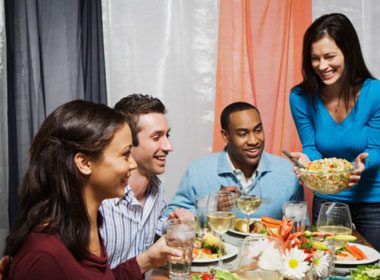
Serving Time
Do
Follow this protocol when serving: the host pours the wine, while the hostess serves the food; ladies first– of course– starting with the oldest and ending with the youngest. Then it’s the men’s turn, in the same order.